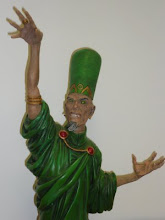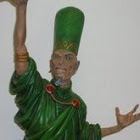
This is an action packed and very thoughtful period drama. Peter Crogan is a corporal in the French Foreign Legion stationed in a North African French colony in 1912. He is coming to the end of his service time and clearly unsure about what to do next. His company gets a new commanding officer, a very vain and much decorated Captain. The company are given the task of escorting a group of local notables to a neighbouring city. The group are attacked, beat off the attackers and make it to their fort. The action plies up for the rest of the story, a violent siege, a piece of extraordinary military stupidity and Peter Crogan's struggle to do the right thing in swirling circumstances.
The black and while art is very striking,it is not in the least naturalistic or realistic, the cast are clearly differentiated and all the details needed to establish the various locations are provided. It is full of movement and is strikingly expressive. The large cast are given great force and vitality, the action is fast and never monotonous, the reader is easily swept along without ever risking being lost or left behind.
Chris Schweizer manages a very difficult task, not only does he create a great action story he stitches in the complex political and social context it takes place in and makes it essential to the action. The context explains why the action is taking place and gives it force and weight. Various cast members express the a lot range of opinions that probably did exist, the internal and external conflicts between the coloniser and the colonised, they do not overwhelm the story in any way. Peter Crogan is trying to do his duty as he understands it which places him at the centre of the competing views, he clings to his duty as his defense against them all.The sophisticated storytelling adds flavour and depth to the narritive and allows Peter Crogan to emerge as a wonderful, engaging and interesting character. A great read.





.jpg)














